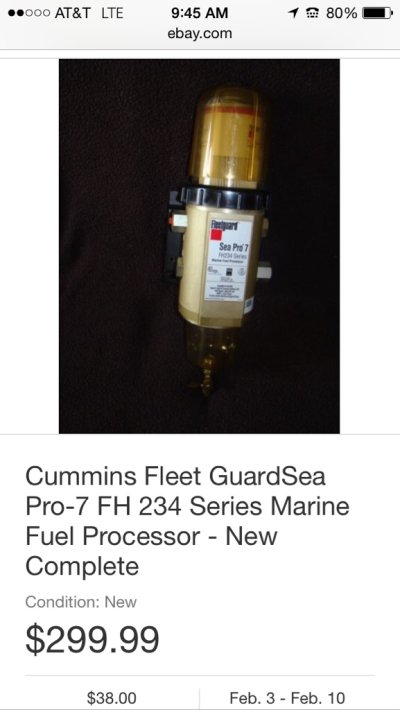sunchaser
Guru
- Joined
- Apr 9, 2008
- Messages
- 10,194
- Location
- usa
- Vessel Name
- sunchaser V
- Vessel Make
- DeFever 48 (sold)
I have 30 micron Racors, then an on-engine 10 micron, followed by the final on-engine 2 micron. Both final on-engine filters are also water separators for the JD4045's. This is what JD recommends for this engine.
Sounds like a perfect setup. Sequential filtering at its best.



